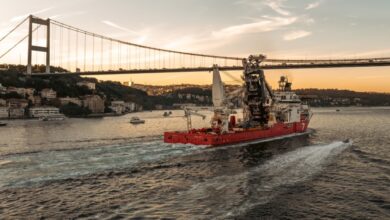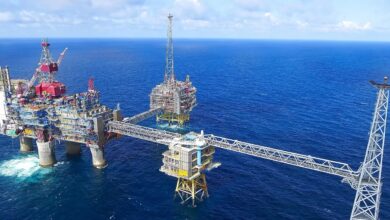Chevron budgets $35.8 billion for 2014 exploration, production activities
Chevron plans to invest $35.8 billion toward exploration and production activities, which is approximately 90% of the company’s 2014 investment program. The company announced a $39.8 billion capital and exploratory investment program for 2014, including $4.8 billion of planned expenditures by affiliates, which do not require cash outlays by Chevron.
The 2014 budget is approximately $2 billion lower than expected total investments for 2013. For the current year, total investments are estimated at $42 billion, including expenditures of approximately $4 billion for major resource acquisitions not included in the original budget.
“We expect 2013 will be a relative peak year for investments, as we completed several attractive resource acquisitions. We also anticipate 2014 will represent the peak year for spending on our Australian LNG projects as we move them closer to first production,” chairman and CEO John Watson said. “Overall, we have an attractive portfolio of investment opportunities, which we will continue to fund in a disciplined fashion to grow value and shareholder distributions.”
Upstream investment
Notable capital investments include developments in Australia, Nigeria, the US deepwater Gulf of Mexico (GOM), the US Permian Basin, Kazakhstan, Angola and the Republic of the Congo.
Planned capital spending is also directed toward improving crude oil and natural gas recovery and reducing natural field declines from existing producing assets throughout the world. About 30% of the upstream capital program is allocated to highly profitable development wells and other projects associated with current producing assets. The 2014 base program includes an increase in activity across several producing regions of North America, as well as in Thailand and Indonesia.
In Australia, the Gorgon project has been under construction for four years and is almost 75% complete. The current estimate for the cost of the foundation project is US $54 billion (AU $55 billion), with plant startup and first gas planned for mid-2015.
“Gorgon project economics are attractive,” vice chairman George Kirkland said. “We continue to make steady progress against key project milestones and are applying lessons learned to our Wheatstone development, which is almost 25% complete. Approximately 75% of our combined LNG offtake from the two projects is committed under firm, long-term sales and purchase agreements. These LNG developments are two of our most important future legacy assets, representing approximately 400,000 barrels a day of net production at full capacity. They will be substantial contributors to our cash flow for decades to come.”
“Our focus is on developing resource projects that grow shareholder value. For instance, we are steadily increasing activity levels to develop shale and other tight resources in Canada’s Duvernay, the Vaca Muerta in Argentina and the Permian Basin of the United States,” Mr Kirkland added.
In the GOM, projects under development include Jack/St. Malo, Big Foot and Tubular Bells. The Jack/St. Malo hull has been moored at the offshore location and is on schedule for a 2014 startup. The Big Foot project is forecasting a tow to location in Q3 2014 and start-up in Q2 2015.
Upstream spending in 2014 for major capital projects also includes:
- Kazakhstan/Russia – advancement of the Tengiz future growth and wellhead pressure management projects (Kazakhstan) and the Caspian pipeline expansion (Kazakhstan, Russia)
- Nigeria – further development of the Usan and Agbami deepwater fields
- Canada – Hebron offshore development and advancement of Kitimat LNG
- Angola, Republic of the Congo – development of Mafumeira Sul (Angola) and Moho Nord (Republic of the Congo)
- Argentina – advancement of the YPF arrangement for the development of the Vaca Muerta shale
- UK– advancement of the Clair Ridge and Alder projects
Global exploration funding is expected to be $3.2 billion in 2014. This planned spending includes initial appraisal of new acreage acquired over the past two years, including Australia, the Kurdistan region of Iraq and Morocco. The program also supports continued exploration and appraisal activity in Western Australia, the GOM, West Africa and in several shale gas regions around the world.




